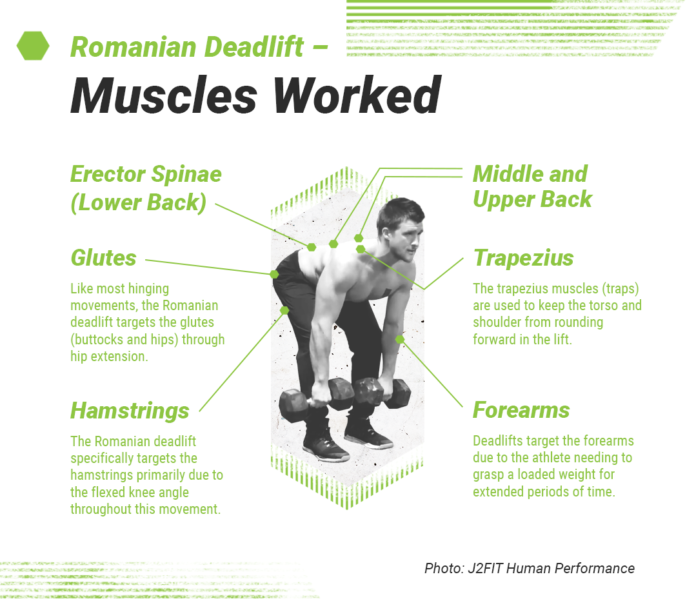The Romanian Deadlift is an exercise that can be used to develop hip health and joint actions. It provides muscle growth (hypertrophy), strength, muscular endurance specific to strength. It can be used in power sports by athletics and for general health and fitness.
The Romanian Deadlift — also referred to as the RDL — is most often seen as an accessory lift with sub-maximal loads, but it’s a movement that has flexible applications in many programmes and for many strength-based goals.
What Is a Romanian Deadlift?
The Romanian Deadlift is a deadlift-variation that can be used to increase posterior chain development (hamstrings, glutes, and back), pulling strength.
In the Romanian deadlift, the lifter keeps the knees slightly bent throughout the movement (rather than fully extended) to increase hamstring and glute engagement, build muscle mass and increase injury prevention.
In the below sections we will discuss everything you need to know about the Romanian deadlift and how you can start to integrate them into your current training routine.

Romanian Deadlift Form and Technique
The Romanian deadlift technique breakdown can be used to teach beginner lifters and athletes how to perform a Romanian deadlift. Note that the first two steps discuss having a lifter pick the barbell up from the floor to start the lift (the Romanian deadlift starts from the top of the lift, and moves downwards towards the floor). If a lifter has issues lifting a load from the floor due to poor postural control or weakness, it may be best to have them grab the barrel from a rack height a few feet off the floor to minimise back injury and simplify the movement.
How to Romanian Deadlift
1. Load a barbell and stand with your feet shoulder width apart, toes forwards, and the barbell running over your shoelaces (from the aerial view).
In this position, it is important that the torso is upright, arms are straight , and the shoulder blades are dropped downwards towards the rear. This will allow you to “lock” the back and minimise strain in the neck.
2. Bend down and grab the bar with a slightly wider than shoulder width grip and only slight bend to the knees
Keep your back flat and shoulders over the barbell. Once you have stood up, reset in the above vertical torso positioning.
3. Push the hips back while maintaining a flat back.
This will result in you feeling tension develop in the hamstrings and across the back (lower and middle, especially around the shoulder blades), with the torso moving towards being parallel to the floor.
4. Use glutes and hamstrings to stand upwards, keeping the barbell close to the body.
5. At the top of the movement, contract the upper back, core, and glutes by flexing from the middle of the back to the buttocks (glutes).
6. Lower barbell the same way and repeat for repetitions.


